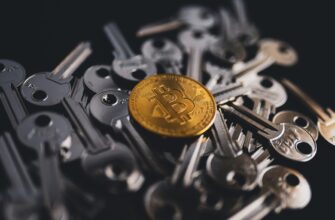What is an Air-Gapped Crypto Wallet?
An air-gapped crypto wallet is a storage method completely isolated from internet-connected devices. Unlike hot wallets (software-based) or hardware wallets (USB-connected), air-gapped solutions never interface directly with online networks. Transactions are signed offline using QR codes, SD cards, or Bluetooth in restricted modes, creating an impenetrable barrier against remote hacking attempts. This physical separation makes it the gold standard for securing high-value cryptocurrency holdings.
Why Air-Gapped Wallets Offer Unbeatable Security
Traditional crypto wallets remain vulnerable to:
- Phishing attacks and malware infections
- Remote exploitation of software vulnerabilities
- Supply chain compromises in hardware devices
Air-gapping neutralizes these threats by eliminating attack vectors. Since private keys never touch internet-connected hardware, even sophisticated hackers can’t remotely access your funds. This isolation is why exchanges and institutional investors use air-gapped “cold storage” for bulk asset protection.
Step-by-Step: How to Guard Your Crypto Wallet with Air-Gapping
Follow this secure setup process:
- Choose Your Device: Use a dedicated offline device like an old smartphone (factory reset), Raspberry Pi, or hardware wallet with air-gap features (e.g., Coldcard, Passport). Never repurpose daily-use devices.
- Create Offline Environment: Disable all wireless connectivity (Wi-Fi, Bluetooth, cellular) permanently. Install OS updates offline via USB before disconnecting.
- Install Wallet Software: Download wallet apps (e.g., Electrum, Sparrow Wallet) directly from official sites using a clean computer. Transfer via USB to your air-gapped device.
- Generate Keys Offline: Create wallet seeds and private keys while disconnected. Write recovery phrases on steel plates, stored in multiple secure locations.
- Transaction Workflow:
- Draft unsigned transactions on an online device
- Transfer via QR code or SD card to air-gapped device
- Sign offline, then broadcast signed transaction via online device
Air-Gapped Wallet Maintenance: Critical Best Practices
- Physical Security: Store devices in fireproof safes or bank vaults. Use tamper-evident bags.
- Verification: Manually verify receiving addresses on both online and offline devices to avoid malware swaps.
- Updates: Only update wallet software after thorough verification. Re-establish air-gap afterward.
- Backups: Maintain encrypted multisig backups across geographically dispersed locations.
- Usage Discipline: Never connect air-gapped devices to charge via public USB ports—use AC adapters only.
Mitigating Air-Gapped Wallet Risks
While highly secure, potential vulnerabilities include:
- Physical Theft: Mitigated by biometric safes and location obscurity.
- Supply Chain Attacks: Buy devices directly from manufacturers and verify tamper-proof seals.
- Human Error: Use multisig setups requiring multiple approvals for transactions.
- Visual Hacking: Shield screens during transaction signing to prevent shoulder surfing.
Air-Gapped Wallet FAQ
Q: Can air-gapped wallets be hacked?
A: Extremely unlikely. Successful attacks require physical device access combined with advanced technical skills—far more difficult than remote exploits.
Q: Are hardware wallets considered air-gapped?
A: Only if they never connect to online devices. Most hardware wallets use USB and temporarily break air-gap during transactions. True air-gapped models use QR/SD transfers exclusively.
Q: How often should I check my air-gapped wallet?
A: Check balances monthly via blockchain explorers. Physically access the device only for transactions or annual integrity checks.
Q: Can I use a regular phone as an air-gapped wallet?
A: Yes, but permanently disable radios, remove SIM cards, and never reconnect to networks. Dedicated devices are safer.
Q: What’s the biggest mistake in air-gapped setups?
A: Complacency. Skipping address verification or using compromised transfer media (e.g., infected USB drives) defeats the purpose.








